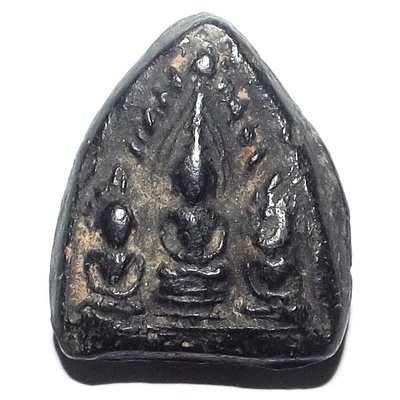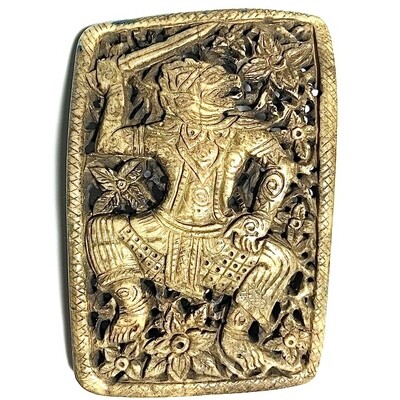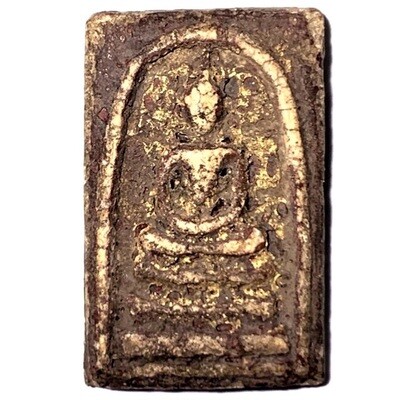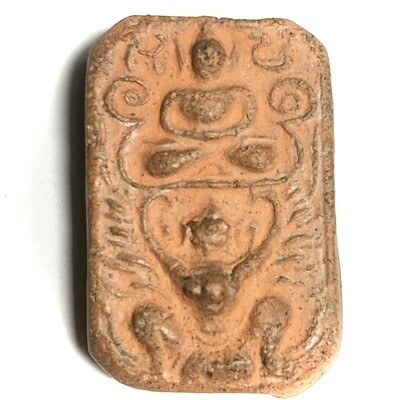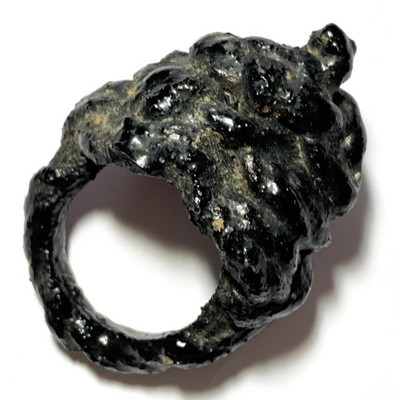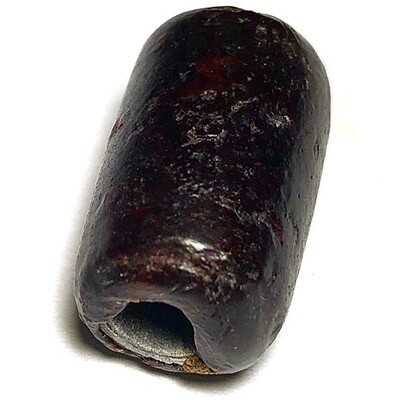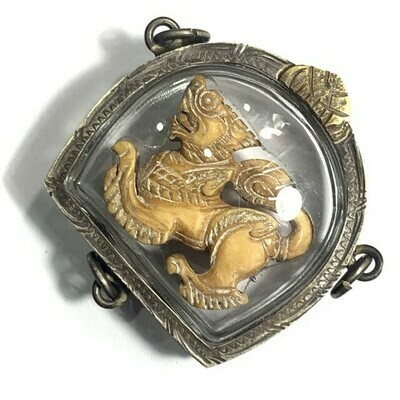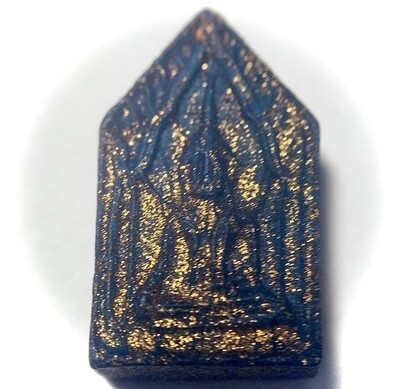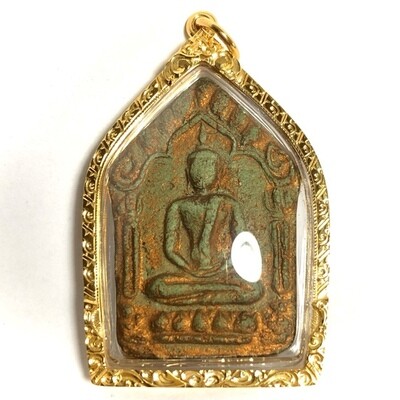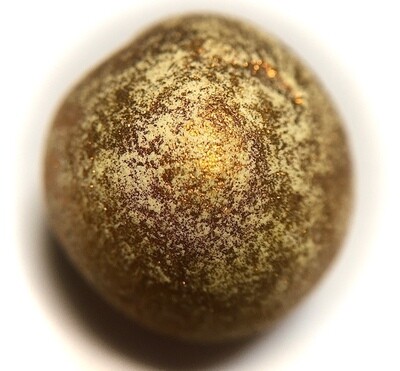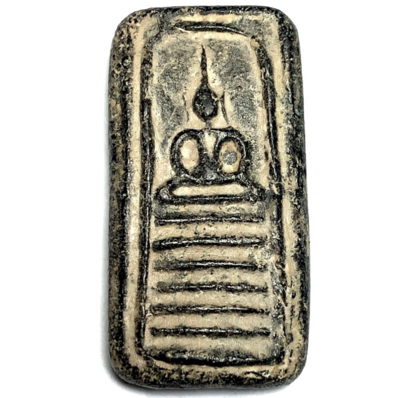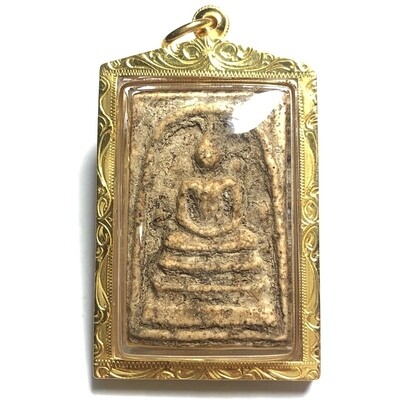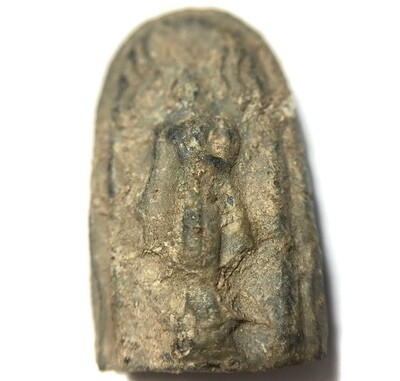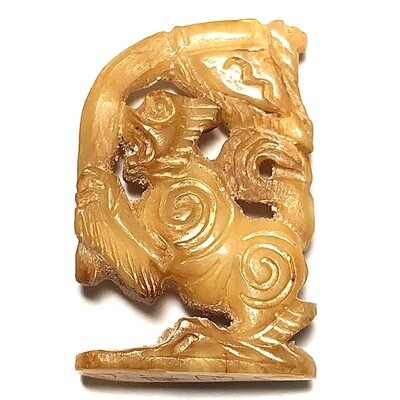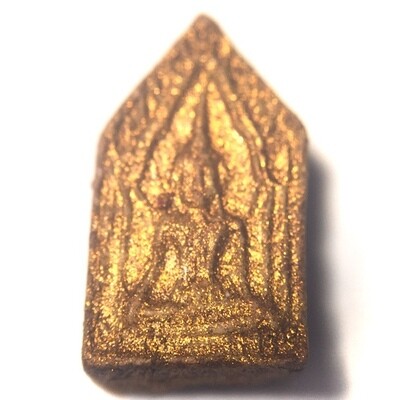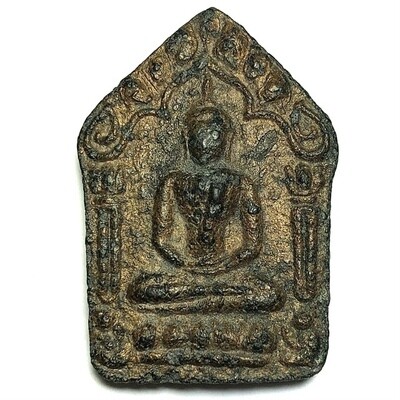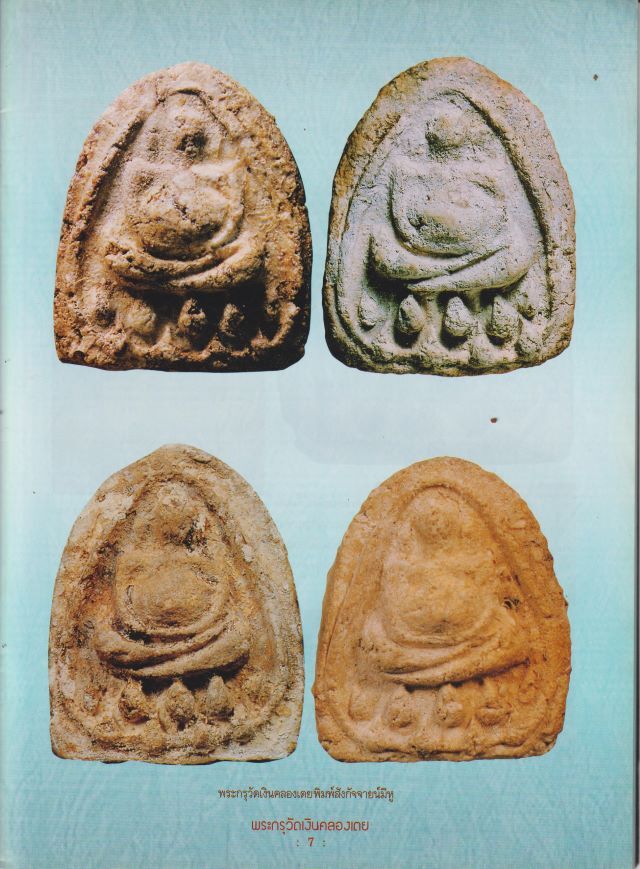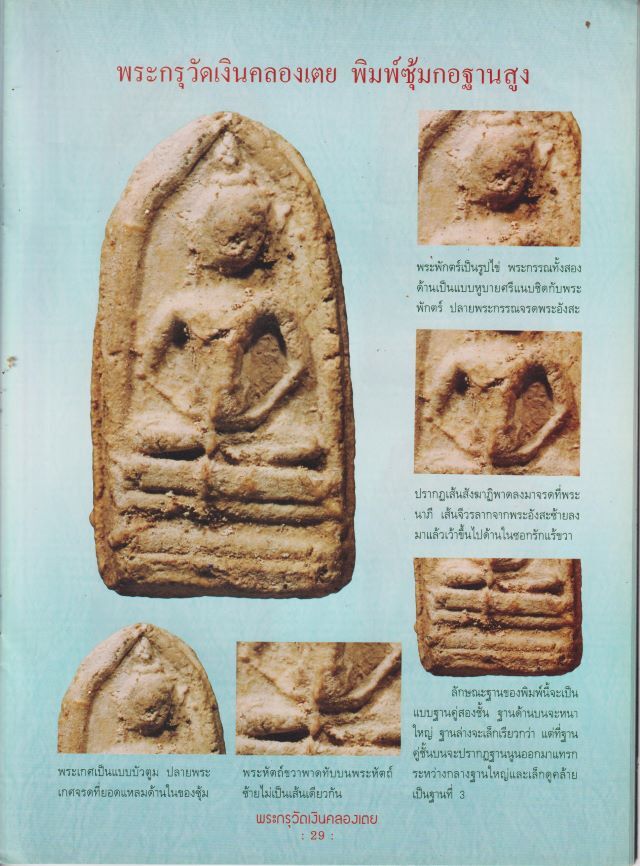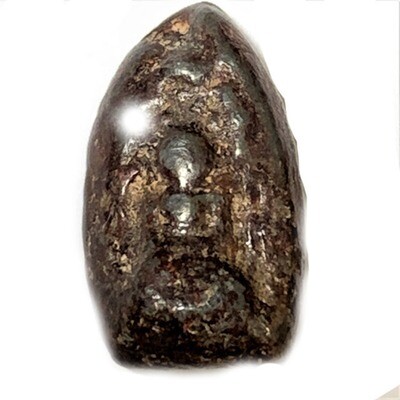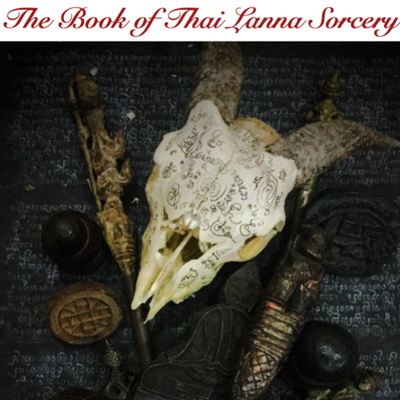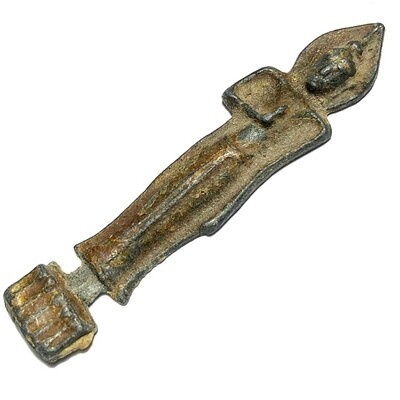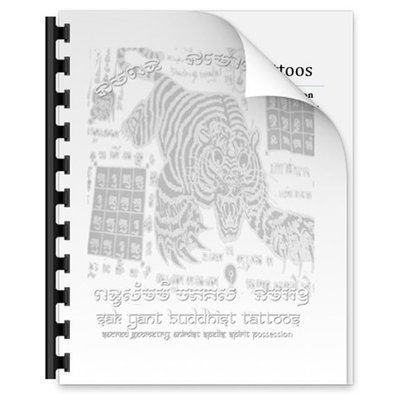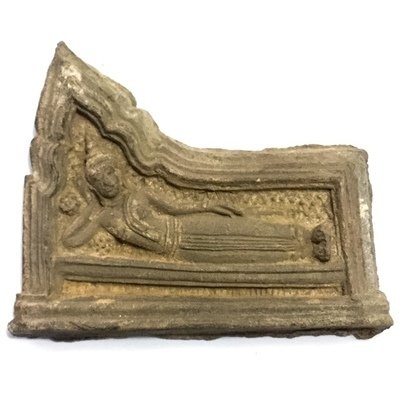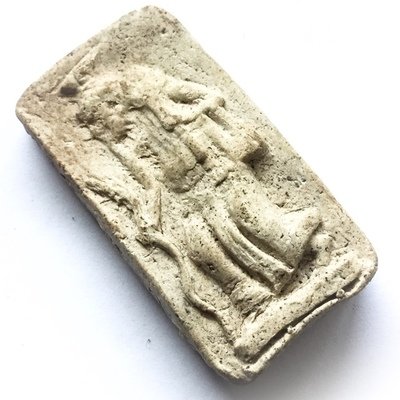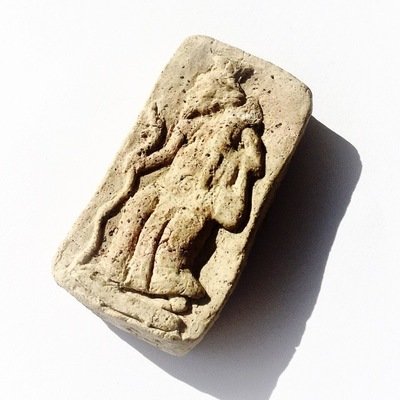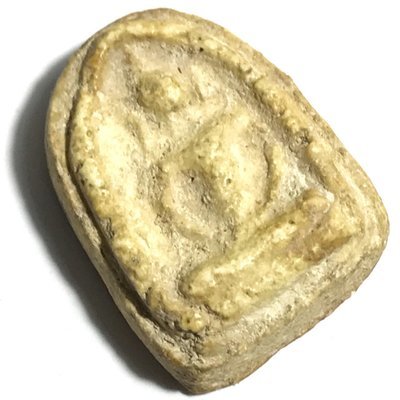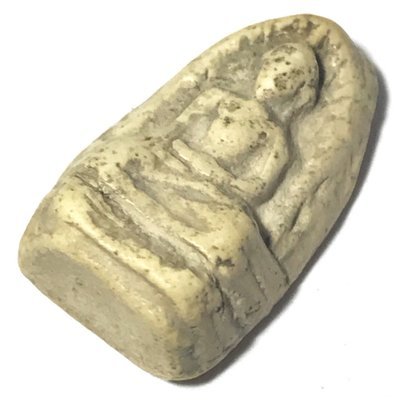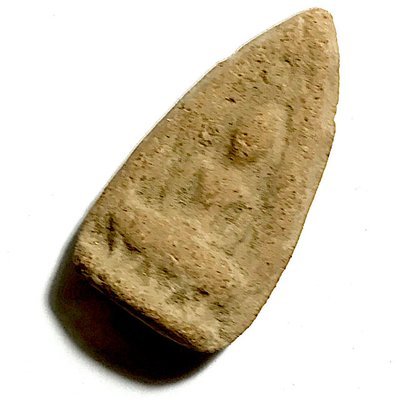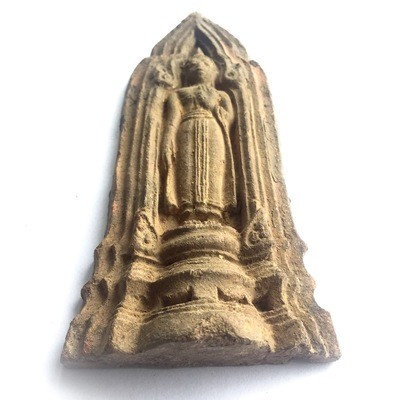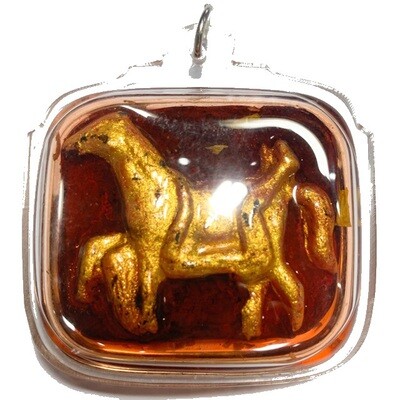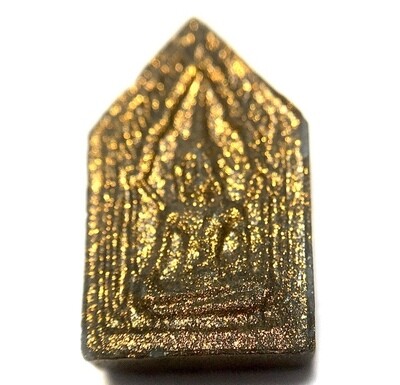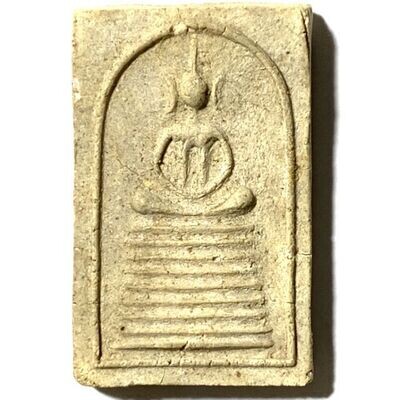A pristinely kept and extremely rare Rian Mangorn Koo Nuea Nava Loha Pim Pised Dtok Sorng Code Ma Wat Pha Nong Lom Run Sao Ha Maha Sethee 5th Lunar Saturday Blessing Ceremony Edition Guru Monk Coin, released in 2543 BE, to raise funds for the Kuti Songk Monks Huts and improve the facilities at the temple of Wat Pha Nong Lom.
This model of Rian Mangorn Koo twin dragons Monk Coin is a very rare Pim Pised (Niyom preferred) and differs from the majority of Rian Mangorn Koo Wat Pha Nong Lom Edition coins in Nava Loha, because of the double code MA stamp. Most coins of the Nava Loha series made for Wat Pha Nong Lom have only a single code Ma Stamp (on the Sangkati chest sash of the robe of Luang Phu), and only the Pim Pised special models received double code stamps. Only very few (unknown number) were distributed with double code stamp, making this not only a sacred, powerful master class amulet, but also a rare collectors piece.
The Rian Mangorn Koo of Luang Phu Hmun is, as are all of his amulets, known for the power of Jaroen Lap Wealth Increasement, and Lucky Fortunes, as well as for their Miraculous Protective Powers. Those born in the year of the dragon love to Bucha this amulet especially, for the obvious reason of the double dragon guardians.
For those with lower budgets, who seek power above collectability and rarity, we recommend to seek the Rian Mangorn Nuea Tong Daeng or Nava Loha single Code Ma, of the same edition, which carries a lower price than this special Nava Loha Pim Pised Gammagarn double code collectors edition model.
Pra Kru Klong Dteuy Amulets Pantheon Study Catalog 52 Pages (E-Book - Thai Language)
Encyclopedic work on the worold famous The Pra Kru Wat Ngern Klong Dteuy amulets are composed of Muan Sarn Clay that is almost identical in appearance to the clay found in the Pra Somdej Wat Bang Khun Prohm, and is as favourite study material for students of the amulets of Somdej Dto. Wat Ngern Klong Dteuy amulets are all found to be Buddha Images in different forms or postures, and are highly reputed for their Choke Lap Kaa Khaay power to attract lucky fortunes, and to bring successful Business.
The temple of Wat Ngern Klong Dteuy is a temple that cannot be seen anymore, for it is in the present day the location of the National Ports Ministry in Bangkok (Ta Ruea Klong Dteuy). Before the Ministry was built there, the Municipality was the location of Wat Ngern Klong Dteuy, Wat Hnaa Pratat and Wat Tong Lang.
This book is now available for purchase as an E-Book (digital download). After your successful payment, you'll be able to access the ebook from the "files" section within your account. You will also receive an email with a link to your download in your inbox. The ebook comes in pdf format, which can be viewed in any browser or pdf reader, whether you prefer to read single or double pages. It's also mobile-friendly, so you can take it with you wherever you go. As an added bonus, you'll also receive a zip file compressed folder containing all pages of the ebook as high-resolution individual images. This is perfect for those who want to use the images in other projects, or print them out at a larger size. With this extra item, you'll have both a digital version of the book as well as the individual images.
Wat Ngern Klong Dteuy
Wat Ngern Klong Dteuy was built in the Ratanakosin Era by a Millionaire family, Mr. and Mrs. Machorn, who were without children or inheritors, and so they spent their wealth on the building of a temple. The temple was at first named 'Wat Hiranya Sivali'. In the year 2480 BE, the Government needed the land back from Wat Ngern Klong Dteuy, Wat Tong Lang and Wat Hnaa Pratat, and served notice on them, and the temples were deconstructed.
Wat Tong Lang and Wat Hnaa Pratat were rebuilt in the ban Kluay district, where both temple administrations were built into one single large temple, and given new name of 'Wat Tat Tong'. Many of you will have seen this temple near the Ekamai monorail station in Bangkok. As to Wat Ngern Klong Dteuy, the temple was moved to be rebuilt at Yan Nava, and was given a new name; 'Wat Phai Ngern'.
The discovery of the Pra Kru Wat Ngern (Klong Dteuy)
As the 3 temples were being dismantled before the building of the Port Authorities of Thailand could begin construction, a horde of sacred powder amulets were found within the Chedi Stupa, which had been buried there at some forgotten time in its history. The Kru Wat Ngern Klong Dteuy amulet series was found in a very large number of different Pim Song (design models); Pim Sangkajjai Mai Mee Hoo, Pim Sangkajjai Mee Hoo (with ears), Pim Hnaa Ruesi, Pim Pra Kong, Pim Samati Hwaek Man, Pim Pha Lelai, Pim Prode Sadtw, Pim Sangkati, Pim Sum Gor Thaan Dtia, Pim Sum Gor Thaan Sung, Pim Leb Mer Samati, Pim Leb Mer Mara Wichai, Pim Pra Pid Ta, Pim Pra Pratan, Pim Pang Nakprok, Pim Mara Wichai Ha Liam, Pim Sum Gor Thaan Koo, Pim Khao Iang, Pim Yern, Pim Um Badtr, Pim Pang Perd Loke, Pim Pid Ta Rasamee, and the Pim Pang Sayasana. As the amulets were found, they were at first distributed at incredibly cheap prices as they were passed around, as the construction workers would keep finding them and put them into bags, and sell them on the marketplaces and to devotees around the temple.
Then the Indo-China war began, and the 2nd World War came, and some devotees who wore these amulets were involved in miraculous lifesaving incidents which attributed Kong Grapan Chadtri Klaew Klaad power to the amulets, and devotees began to seek the amulets out fervently as a protection against the deadly dangers of wartime. The prices and rarity of the amulets increased rapidly during the wartime years, and the series became a High End collector's classic, with certain models fetching extremely high prices, for example the Pim Pra Sangkajjai Mee Hoo, being the most highly preferred of all models, and the Pra Sum Gor, also a highly esteemed model. From examination of the artisanry and the Muan Sarn Sacred Powders, one can conclude that the amulets were created sometime during the Early Ratanakosin Era. It is assumed that the amulets were made by some high ranking official or courtiers, or at least from a wealthy important family lineage.
This is conclusive, because the artisanry and quality of Muan Sarn Sacred Powders are of the finest, and could only have been commissioned by an important influential wealthy sponsor. From the amulets found within the Kru chamber, there seems to be two distinct batches, revealing that the Pra Kru Wat Ngern Klong Dteuy amulets belong to two different batches, made at different times. It is assumed the first time amulets were made and hidden in the Chedi Stupa, was during the first few years of existence of the temple, sometime around 2335 BE. The amulets from the first batch are mostly larger amulets, and have very marble-like hardened stony texture, with shiny marbled surface effect. Most if these will have pong gesorn pollen powders risen up to float on the surface of the clay.
